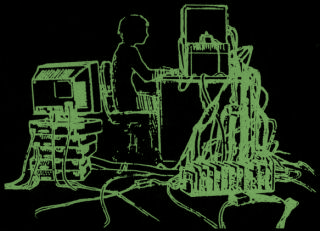


The Sutta Slime Sutta Directory is a work-in-progress, serving to guide readers through the Buddha’s sermons preserved in the four primary bodies of the Pali Canon’s Sutta Pitaka. It will contain a short synopsis for each sutta, as well as links to my own analysis of its contents and outside translations if you want to read the sutta in full.
When possible, within my analysis of the suttas, I will discuss how these suttas compare to parallel versions preserved outside of the Pali Canon. This can help establish what ideas can be considered “early,” and what may be regarded as later innovation.
The directory assumes a basic level of understanding regarding the Buddha’s teaching. Beginners are encouraged to consult the “essays” portion of this website, as well as outside material written for newcomers to Buddhism.
The body of Buddhist scriptures is massive, spanning across space and time. It consists of texts composed in different countries, languages, and periods of time, with the earliest texts being rooted in the 5th century BCE (the time of the Buddha) and later works stretching well into the common era. Within this giant body of texts are three primary canons: the Pali Canon, the Chinese Canon, and the Tibetan Canon.
The Tibetan Canon is composed of two subcategories: the Kangyur and the Tengyur. Tibetan Buddhists believe the texts of the Kangyur are teachings and monastic rules spoken by the Buddha. It contains only a small portion of early suttas (sermons of the Buddha), mostly copied from the now-extinct Sarvāstivāda sect. The majority of the Kangyur texts are Mahāyāna or Tantric teachings which surfaced later. These are beautiful and valuable teachings, but they fall outside the scope of the Sutta Slime project. The Tengyur is not of interest to us here, because it collects a variety of hymns, commentaries, and philosophical works written by other authors. For this reason, the Tibetan Canon will be of limited use in this project.
The Chinese Canon refers to a vast corpus of works from many different Buddhist traditions which were collected and preserved in China. There are various editions of this canon across East Asia, with the most commonly used version being the Japanese collection called the Taishou Revised Tripitika. It was published in Tokyo in the early 1900s, and consists of 100 volumes spanning a massive scope of material, from the Buddha's early sermons to very late commentaries and everything in between (including illustrations). The first two volumes contain the body of work known as the Āgamas, which contain some of the early Buddhist discourses.
Finally, we have the Pali Canon, which is actually the earliest complete canon. It is also the only canon which is entirely produced from one sect - the Mahāvihāravāsins of Sri Lanka, now known as the Theravāda sect. The Pali Canon is also called the Tipitaka, which is Pali for "three baskets," referring to the three divisions of texts it contains. The first and third baskets are, respectively, the Vinaya Pitaka (Monastic Code Basket) and Abhidhamma Pitaka (Higher Teaching Basket). The Vinaya is a collection of monastic rules and related stories. Some of it is early, especially the Pātimokkha - the core set of monastic regulations - but it is primarily for monks and nuns. The Abhidhamma is almost entirely composed of later compositions, stemming from a time when monks became interested in systematically organizing and elaborating on the Buddha's teachings, often extrapolating at length on incredibly minute details which the Buddha never discussed in his sermons.
This leaves us with the Sutta Pitaka - the Discourse Basket. This basket contains the Buddha's sermons, presented in 5 broad collections. The Sutta Pitaka has a stunning amount of overlap with the Āgamas of the Chinese Canon. Despite differences in organization and minor inconsistencies regarding narrative framing (such as where the Buddha was when he gave a particular sermon), these two collections agree with and support one another on major doctrinal points. This overlap is where the interest of our project lies. The points of agreement between the Sutta Pitaka and the Chinese Āgamas allow a hypothetical reconstruction of the earliest body of Buddhist teachings, inherited by every sect of Buddhism and preserved after the sangha began to split into different schools and develop innovations. Sometimes texts from the Tibetan canon or manuscripts found outside of the major canons corroborate these overlapping points, further strengthening the hypothesis that they are authentic remnants of the historical Buddha’s teaching.
This project, then, aims to provide an easily-accessible index of the suttas as preserved in the Pali Canon, alongside easily-digestible summaries and comparisons to parallel texts in an attempt to aid anyone interested in learning about the earliest strata of Buddhist teachings, often called the Early Buddhist Texts (EBTs).
For now, this project is only focusing on the four primary subdivisions of the Sutta Pitaka. The fifth, the Khuddaka Nikaya (Minor Collection), contains a wide variety of different texts, some which are certainly as old as any of the other suttas, and some which are certainly later additions. Some of these texts also have parallels in the Chinese Āgamas. I hope to add the early Khuddaka selections to this index eventually, but for now, I'm leaving it out.